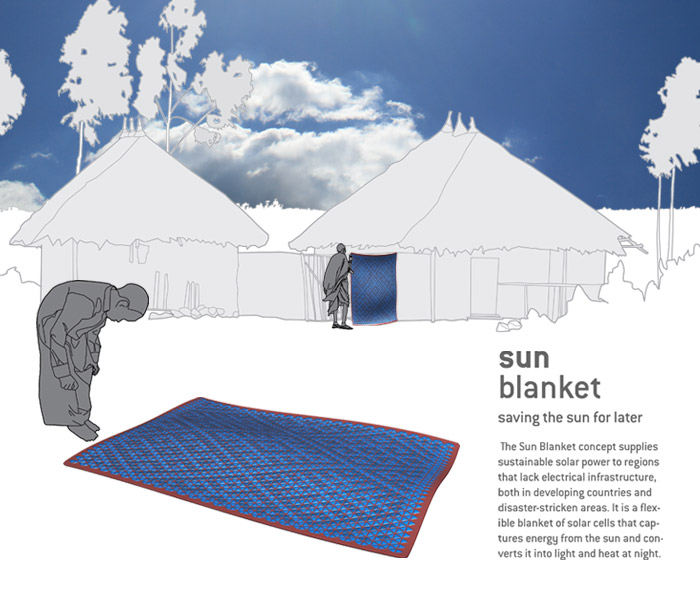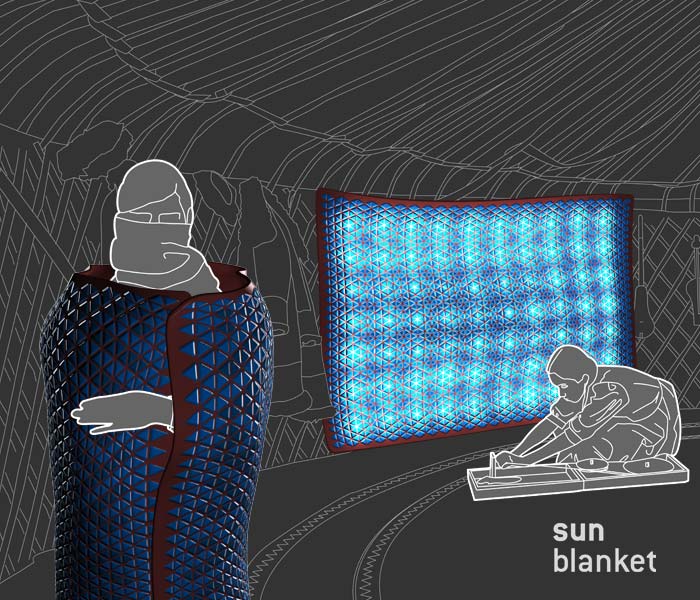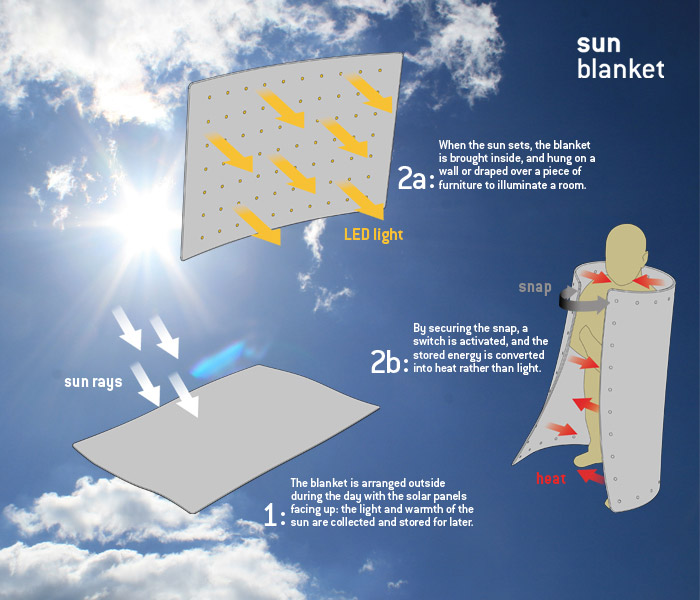
sun blanket by collin farill from usa
designer's own words:
Sun Blanket: Saving the sun for later
Two billion people around the world live without access to affordable, safe, and reliable light and energy. The Sun Blanket concept supplies sustainable solar power to regions that lack electrical infrastructure, both in developing countries and disaster-stricken areas. It is a flexible blanket of solar cells that captures energy from the sun and converts it into light and heat at night. Either hanging in a hut in Africa or wrapped tightly around a displaced tsunami victim, the Sun Blanket bolsters the health, security, and economic well being of the user while preserving the community’s way of life.
To harvest energy from the sun, the 60” by 90” blanket is arranged outside during the day with the solar panels facing up: the light and warmth of the sun are collected and stored for later. When the sun sets, the blanket is brought inside, and hung on a wall or draped over a piece of furniture to illuminate a room. Working by this light, a family can continue their tasks, and a child can study late into the night. On a cold night, a person can wrap the blanket around his or her body to recreate the warmth of the sun. By securing the snap, a switch is activated, and the stored energy is converted into heat rather than light. A sleeping child can be covered with this safe, reliable heated blanket, or a person can drape it like a cloak.
With ultra-thin lithium polymer ion batteries, one day’s worth of sun’s rays will store enough energy to power the lighting or heating elements for seven to eight hours. Solid-state solar cells and super white Light Emitting Diodes (WLEDS) are sewn to the upper layer of the blanket. The triangular pattern of cells and WLEDs was carefully designed to replicate traditional textiles and cloth from around the world. When the integrated photoconductor senses darkness, the stored energy is converted to electricity to power the WLEDs throughout the night. Connecting any of the snaps around the edges of the blanket cancels the light and in its place, activates the heating coils that are hidden between the two layers of cloth.
The Sun Blanket was designed to be affordable for low-income communities and could also be distributed by aid agencies like the Red Cross. To survive the harsh conditions of a developing nation, the nylon blanket is designed to be flexible and easily transportable, and the electronics are protected to make the product highly shock and weather resistant. Merging sustainable technology with an existing culture without forcing the culture to change is a challenge. The Sun Blanket achieves this by infusing simple technology into a cultural artifact that the population is already familiar with: a blanket.
Sun Blanket gathers and stores the sun’s energy during the day.
 In darkness, the Sun Blanket releases its stored energy as either light or heat.
In darkness, the Sun Blanket releases its stored energy as either light or heat.
 Sun Blanket funtion diagram
Sun Blanket funtion diagram